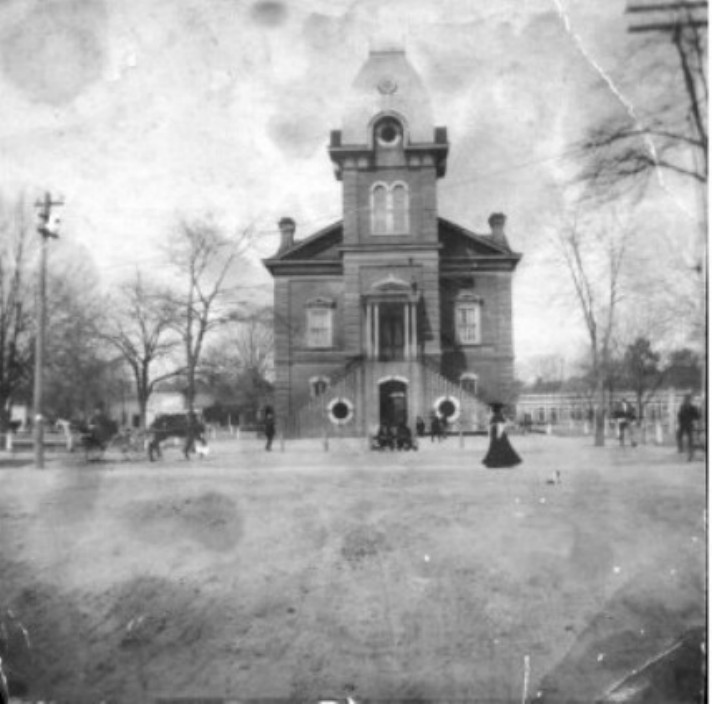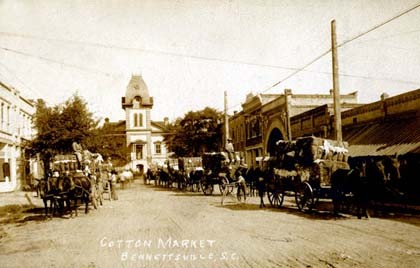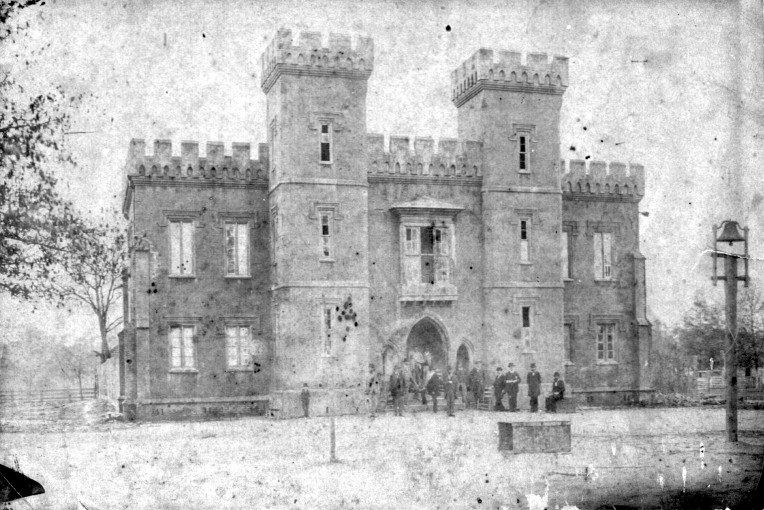Clean Up Day
Learn More
 The Official Web Site of the State of South Carolina
The Official Web Site of the State of South Carolina

The County of Marlboro was established on March 2, 1785 and originally called Marlboro District. It was named for John Churchill, first Duke of Marlborough, whose Blenheim Palace in Oxfordshire, England, was a gift to him from Queen Anne. Marlboro District was carved from Cheraw District. Later Marlboro, Chesterfield, and Darlington Districts became Counties.
When Marlboro District was created, legislation required that each district select a site and erect a courthouse and jail. The site chosen for Marlboro's first courthouse was on the banks of the Great Pee Dee River near Gardner's Bluff. A few years later, it was moved a short distance inland and near the north bank of Crooked Creek where it crossed the old River Road. The county's first town named either Carlisle or Winnfieldville was developed. Its presence is no longer noticeable except for a granite marker denoting the location of the first courthouse as being at that location.
As the county's population grew away from the river, settlers requested that a more central location for the courthouse and jail be secured. In December of 1819, the S.C. General Assembly authorized the removal of the courthouse from the river to a more central location along the old stagecoach road. This was on a high bluff above Crooked Creek. That location was the beginning of our current county seat, Bennettsville.
During the mid-19th Century, communities throughout the county began around churches, principal roads, and at the county's most famous mineral springs, Blenheim. Planters and farmers continued to find Marlboro County's loamy soils excellent for farming.
As the Civil War was waning, Marlboro County was host to every unit of General William T. Sherman's Union Army when it left Cheraw, crossed the Great Pee Dee River, and traveled through this county in route to its final engagement in North Carolina.
Bennettsville was captured March 6, 1865, by Major General Frank P. Blair, commanding general of the Union Army's 17th Corps. While here, General Blair used the historic Jennings-Brown House as his headquarters. Today, this home is part of the Marlboro County Historical Museum complex.

Although some frame buildings, warehouses, and a few downtown structures were burned, Marlboro County's courthouse was spared, giving this county one of the state's oldest complete set of county records.
D.D. McColl brought the first railroad to the county during the 1870s, the first bank during the 1880s, and cotton mills to McColl and Bennettsville during the 1890s and early years of the 20th Century. The arrival of the railroad did a great deal to lead development of the county as it made it possible to transport Marlboro-grown cotton to markets and mills far from her borders.

During this time, McColl, Clio, Tatum, Blenheim and Bennettsville grew with mercantile stores, doctors' offices, and grocery stores. Postal service improved drastically and schools were built all across the county.
During the first quarter of the 20th Century, more growth occurred as the national and state economies blossomed. Marlboro sent her sons to fight both World War I and World War II. As World War II loomed, a primary flight training base, Palmer Field, was built and opened just west of Bennettsville. Cadets from across the nation came and obtained their primary flight training here.
In later years the base was converted into the home of Powell Manufacturing Co., Inc., an internationally-known leader in manufacturing of farming equipment, tobacco harvesting, and bulk curing equipment. Powell remained in operation until 2002.
Adjacent to Powell in 1989 the state built a minimum-maximum security prison, Evans Correctional Institution, home of 1200 inmates. The institution was named for U.S. Senator Josiah J. Evans of Society Hill, who was born in Marlboro County.
During the 1940s, 1950s, and the 1960s, Marlboro County attracted numerous industries giving employment to farm workers being idled by mechanized and scientific farming methods.
During the 1950s, Crooked Creek was dammed on the northern edges of Bennettsville to form Lake Paul A. Wallace. This lake is divided into three parts: a swimming and boating side with a one mile skiing channel, grassy sunning terraces and white sandy beaches for swimming. Across a diversion dike is the larger fishing and sailing portion which is stocked with fish and fertilized and managed by S.C. Wildlife Department. It is said to be the world's largest man-made controlled fishing lake. The third portion of the lake lies north of Beauty Spot Road and is the reservoir for the City of Bennettsville's water system as well as a waterfowl refuge with Canada Geese, ducks, coots, mergansers and herons in residence. A three-mile walking trail is located around the eastern shore and across the diversion dike of the Lake.
Marlboro County currently operates under a Council/Administrator form of government divided into eight separate districts. Each district is represented by a Council member elected by the citizens of that district. The Chairman and Vice-Chairman are elected each January by the Council members from the eight districts. The Chairman has full voting rights. Regular Council meetings are held the second Thursday of each month. Following are a few pictures of the old Marlboro County Courthouses.